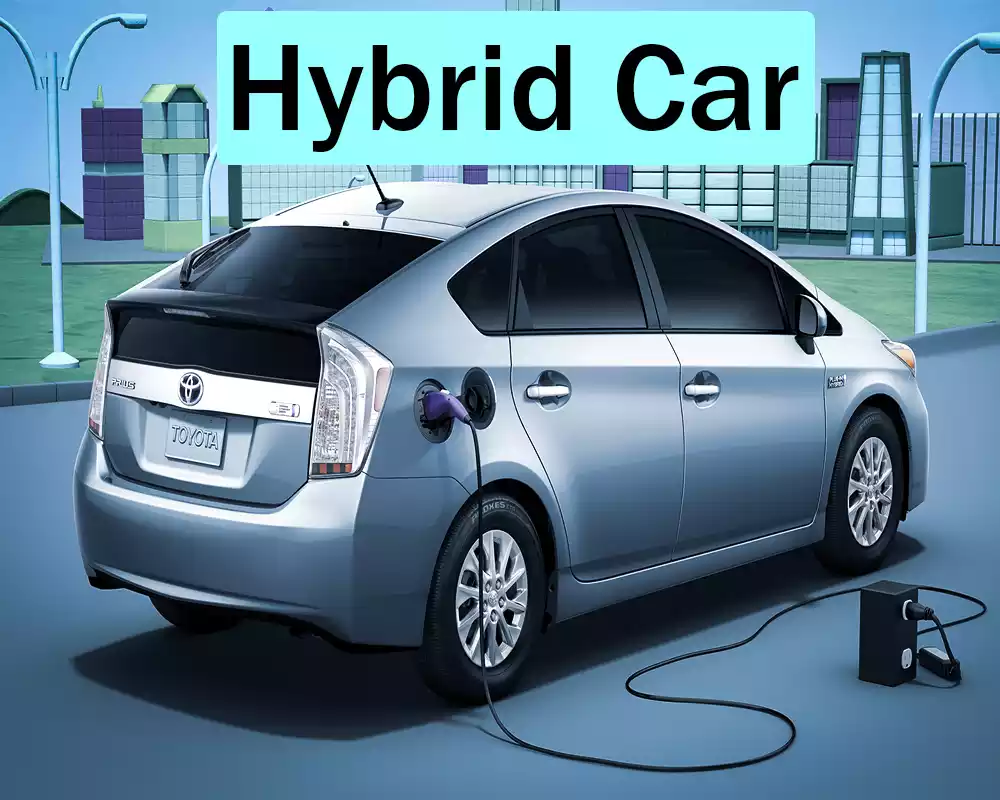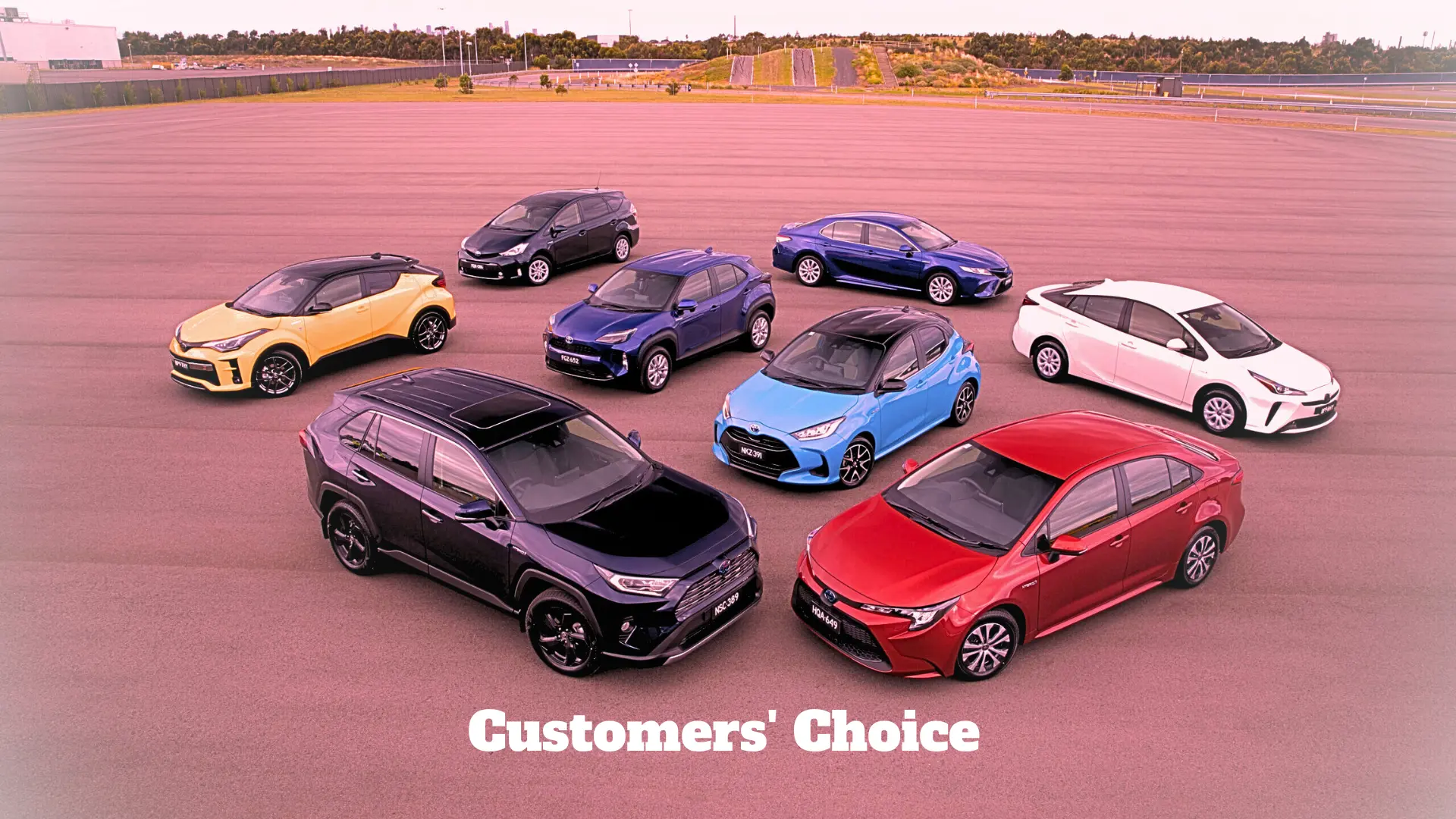Introduction to Hybrid Car and Normal Car
Two popular options are hybrid cars and normal cars. In today’s rapidly evolving automotive industry, there are various types of cars available on the market. While both serve the purpose of transportation, they differ significantly in terms of technology, fuel efficiency, environmental impact, and overall performance. This article aims to provide a comprehensive comparison between hybrid cars and normal cars, highlighting their key differences and helping readers make informed decisions.
Definition and Explanation of Normal Car
A normal car, also known as a traditional or conventional car, solely relies on an internal combustion engine powered by gasoline, diesel, or alternative fuels. It operates without any electric motor or battery assistance. Normal cars have been the dominant vehicle type for decades and have undergone advancements in terms of fuel efficiency, safety features, and overall performance.
Over the years, regular cars also known as gasoline or diesel vehicles. it has evolved, introducing new features by various manufacturers. In the 1800s, there were no cars with electric starter engines. The flywheel had to be spun manually by the driver in order to start the vehicle. Then, the electric start engine was introduced and it became much easier.

The combustion engine of a regular car converts energy to move the vehicle. This is the basic technology of a regular car. The combustion engine can be used to categorize regular cars. There are many types of combustion engines, such as the four-stroke, two-stroke, single-stroke, and multiple strokes.
Different car models use different combustion engine types depending on their intended purpose. Fuel performance in regular cars varies with the fuel type, as a gasoline engine is different from diesel. The most common engine problems in regular cars are caused by a substandard fuel mixture, sparking faults, and a lack of compression. Diesel engines, however, do not use a spark plug. This means that sparking faults are not visible in diesel engines.
Definition and Explanation of Hybrid Car
You may be thinking about hybrid car what is? A hybrid car combines an internal combustion engine (typically fueled by gasoline) with an electric motor or battery pack. The electric motor assists the engine during acceleration and certain driving conditions, reducing fuel consumption and emissions. Hybrid cars utilize regenerative braking to recharge their batteries, capturing and storing energy that is typically lost as heat in normal cars. This innovative technology allows hybrids to achieve greater fuel efficiency compared to conventional vehicles.
Hybrid technology offers one of the best ways to combat greenhouse effects caused by cars: combustion of gasoline in gas cars releases a great deal of carbon dioxide into the environment. Hybrid cars contain both a gasoline engine, an electric motor, and batteries; the smaller gasoline engine uses advanced technologies to lower emissions while increasing efficiency; its key feature is an electric motor powered by battery energy to accelerate acceleration as the car slows; then acts as a power generator, returning its energy to batteries when slowing.

Batteries also play an integral role in this process: helping store and deliver energy as energy storage devices.
Hybrid cars use two different technologies. The first is called a parallel hybrid. In this case, the transmission (the system that transfers power from the motor to the wheels) can be turned by both the gasoline and electric motor. The transmission then turns the wheels. Another technology is called a series hybrid.
In this case, the gasoline motor does not power the engine directly. It has a generator instead, which is another type of electric motor than the main motor. This generator can be used to charge the batteries or to power the main motor that powers the transmission. Honda Insight, a parallel hybrid system is a good example.
What is the difference between Hybrid and Regular Cars?
- Powertrain: Hybrid cars combine an internal combustion engine (ICE) with an electric motor and a battery pack. This hybrid system allows the car to run on either the ICE, the electric motor, or a combination of both. Regular cars, also known as gasoline or diesel cars, solely rely on an ICE for propulsion.
- Fuel Efficiency: Hybrid cars are designed to be more fuel-efficient than regular cars. The electric motor assists the ICE, reducing the reliance on fossil fuels and improving overall fuel economy. This efficiency translates into reduced fuel consumption and lower carbon emissions.
- Regenerative Braking: Hybrid cars feature regenerative braking, a technology that converts kinetic energy into electric energy. When braking or decelerating, the electric motor acts as a generator, capturing and storing energy in the battery. This energy is then used to power the electric motor, further enhancing fuel efficiency.
- Environmental Impact: Hybrid cars have a smaller environmental footprint compared to regular cars. The combination of lower fuel consumption and reduced emissions helps mitigate air pollution and greenhouse gas emissions. This makes hybrid cars a more environmentally friendly option, contributing to a greener transportation system.
- Cost: Hybrid cars typically have a higher upfront cost compared to regular cars. The advanced technology, including the electric motor and battery pack, adds to the manufacturing cost. However, potential long-term savings on fuel expenses and potential tax incentives can help offset the initial investment.
- Driving Experience: Hybrid cars often provide a smoother and quieter driving experience due to the electric motor’s contribution. The instant torque from the electric motor can deliver responsive acceleration, especially in stop-and-go city driving. Regular cars may offer a wider range of engine options and performance characteristics but may not provide the same level of quietness or immediate torque.
- Hybrid vehicles have better mileage. Normal hybrid cars get 35km/liter, while regular cars only get 15km/liter. (approximately)
- Hybrid vehicles are more expensive than gasoline-powered cars.
- A hybrid car’s gasoline engine is smaller than a standard gasoline engine.
- Hybrid cars are more efficient than conventional cars. The torque is reduced when the engine is smaller.
- Hybrid cars are more environmentally friendly than regular cars. The emission of carbon dioxide in hybrid cars is lower than in regular cars.
Hybrid Cars and Normal Cars: Comparison Table
| Comparison Factors | Hybrid Cars | Normal Cars |
|---|---|---|
| Fuel Efficiency | Superior fuel efficiency, higher mileage | Relies solely on internal combustion engines, lower mileage |
| Environmental Impact | Lower emissions, reduced carbon footprint | Higher emissions contribute to air pollution and climate change |
| Driving Experience | Smooth and quiet ride, responsive acceleration | More power, dynamic driving experience |
| Upfront Cost | The generally higher upfront cost | Lower upfront cost |
| Long-Term Savings | Potential fuel cost savings over time | Higher fuel expenses in the long run |
| Government Incentives | Eligible for tax credits or rebates | Limited incentives for normal cars |
| Infrastructure and Service | Charging infrastructure required, specialized maintenance | Well-established infrastructure and service centers |
| Flexibility | Suitable for stop-and-go city driving | Suitable for various driving conditions |
| Range | The limited electric range for non-plug-in hybrids | No range limitations |
Environmental Impact: Hybrid Car and Normal Car
As environmental concerns intensify, vehicle impact on the environment has become an increasing priority among consumers. When comparing hybrid cars and normal cars, it is important to assess their environmental impact. This article examines how these two types of cars differ in terms of emissions, energy efficiency, and sustainability, ultimately providing insights into their environmental implications.
Emissions
One of the primary differences between hybrid cars and normal cars lies in their emissions. Hybrid cars are designed to be more environmentally friendly by reducing greenhouse gas emissions. These vehicles employ both an internal combustion engine and an electric motor. During low-speed or stop-and-go situations, hybrid cars can rely solely on their electric motor, producing zero emissions. This feature significantly reduces the overall emissions footprint of hybrid cars compared to normal cars, which solely rely on internal combustion engines.
Energy Efficiency
Hybrid cars also excel in terms of energy efficiency. By utilizing regenerative braking and the ability to recharge their batteries during operation, hybrid cars can recover energy that would otherwise be wasted in normal cars. The electric motor in hybrid cars assists the engine during acceleration, resulting in better fuel efficiency and reduced reliance on fossil fuels. On the other hand, normal cars solely rely on the combustion engine, which is less efficient in converting fuel into usable energy.
Consequently, hybrid cars have a clear advantage in terms of energy efficiency and can contribute to lower fuel consumption and reduced dependence on non-renewable energy sources.
Sustainability
In terms of sustainability, hybrid cars offer several advantages over normal cars. The use of electric motors and battery packs in hybrid cars helps to diversify the energy sources used for propulsion. This diversification reduces dependence on fossil fuels, which are finite and contribute to climate change. Additionally, hybrid cars incorporate technologies and materials that promote sustainability, such as lightweight materials for improved fuel efficiency and the use of recycled or eco-friendly materials in their construction.
These sustainable practices align with global efforts to reduce carbon emissions and promote a greener future.
On the other hand, normal cars have a higher environmental impact due to their reliance on internal combustion engines. These engines emit greenhouse gases, including carbon dioxide, which contribute to climate change. Furthermore, normal cars tend to have lower fuel efficiency, leading to higher consumption of fossil fuels and increased emissions.
Remarks
When comparing the environmental impact of hybrid cars and normal cars, it is evident that hybrid cars offer significant advantages. They emit fewer greenhouse gases, have higher energy efficiency, and incorporate sustainable practices. By reducing reliance on fossil fuels and promoting energy diversification, hybrid cars play a crucial role in mitigating climate change and striving for a more sustainable future. Normal cars, while still widely used, have a higher environmental impact due to their reliance on internal combustion engines and lower fuel efficiency.
Advantages of Hybrid Car and Normal Car
Advantages of Hybrid Cars:
- Fuel Efficiency: Hybrid cars combine an internal combustion engine with an electric motor, resulting in improved fuel efficiency. They consume less gasoline compared to conventional cars, which helps reduce fuel costs and dependence on fossil fuels.
- Environmental Friendliness: Hybrid cars produce lower emissions of greenhouse gases and pollutants compared to conventional cars. The electric motor assists the engine, reducing the workload and improving overall fuel economy, resulting in reduced carbon dioxide (CO2) emissions and air pollution.
- Regenerative Braking: Hybrid cars employ regenerative braking technology, which converts the kinetic energy generated during braking into electric energy. The energy stored in the batteries is used to power an electric motor. This reduces wear on brake pads and increases overall efficiency.
- Reduced Noise Pollution: The electric motor in hybrid cars operates silently at lower speeds, resulting in reduced noise pollution. This feature is especially beneficial in urban areas and contributes to a more pleasant driving experience.
- Tax Incentives and Rebates: Many countries and regions offer tax incentives, rebates, and subsidies for hybrid car owners. These financial incentives can help offset the higher initial purchase cost and make owning a hybrid car more affordable.
Advantages of Normal Cars:
- Lower Initial Cost: Normal cars typically have a lower purchase price compared to hybrid cars. This can be advantageous for individuals with budget constraints or those who don’t require the additional features and benefits of a hybrid vehicle.
- Widespread Availability: Normal cars have been on the market for a long time, resulting in a wide range of options and models to choose from. Additionally, conventional fueling infrastructure is well-established, making it easier to find gasoline stations and refuel the vehicle.
- Performance and Power: Some conventional cars offer higher performance and power compared to hybrid cars, particularly in sports cars and larger vehicles. These cars often have larger engines and can deliver faster acceleration and higher top speeds.
- Maintenance and Repair Costs: Normal cars typically have simpler mechanical systems compared to hybrid cars, which can result in lower maintenance and repair costs. The widespread availability of parts and experienced mechanics can also contribute to reduced servicing expenses.
- No Range Anxiety: Normal cars rely solely on gasoline or diesel fuel and do not have the range limitations associated with electric vehicles. This eliminates the need for recharging or worrying about running out of electric power during long trips.
The advantages listed above may differ depending on the specific car model, driving conditions, and individual preferences. Additionally, advancements in hybrid technology and the growing availability of charging infrastructure for electric vehicles may influence the advantages and considerations in the future.
Disadvantages of Hybrid Cars and Normal Cars
While hybrid cars and normal cars each have their advantages, it is essential to consider their disadvantages as well. This article explores the drawbacks associated with both types of vehicles, providing insights into the limitations and challenges they present.
Disadvantages of Hybrid Cars
- Higher upfront cost: Hybrid cars tend to be more expensive upfront compared to normal cars. The advanced technology, including the electric motor, battery pack, and regenerative braking system, adds to the manufacturing cost, making hybrid cars less affordable for some consumers.
- Limited electric range: Hybrid cars rely on a combination of an internal combustion engine and an electric motor. While they offer improved fuel efficiency, their electric range is typically limited compared to fully electric vehicles. This means that hybrid cars may still require frequent refueling or rely on the combustion engine for longer trips.
- Complex maintenance and repairs: The advanced technology and components in hybrid cars can make maintenance and repairs more complex and potentially more expensive. Specialized training and equipment may be required for servicing hybrid vehicles, which can limit the options for maintenance and repair facilities.
- Battery degradation and disposal: Hybrid cars use battery packs to store and deliver electrical energy. Over time, these batteries can degrade, leading to reduced performance and range. Additionally, the disposal of hybrid car batteries can pose environmental challenges, as they contain hazardous materials that require proper handling and recycling.
Disadvantages of Normal Cars
- Higher fuel consumption: Normal cars solely rely on an internal combustion engine, which tends to have lower fuel efficiency compared to hybrid cars. This results in higher fuel consumption and increased fuel expenses for owners of normal cars, especially in situations with frequent stop-and-go traffic or long commutes.
- Higher emissions: Internal combustion engines in normal cars emit greenhouse gases and pollutants, contributing to air pollution and climate change. The higher emissions of normal cars have a more significant environmental impact compared to hybrid cars, which incorporate electric motors and have lower emissions.
- Dependency on fossil fuels: Normal cars rely solely on gasoline or diesel as their fuel source. This dependence on fossil fuels contributes to the depletion of finite resources and increases vulnerability to fluctuations in fuel prices. It also perpetuates the reliance on non-renewable energy sources, hindering the transition to a more sustainable and clean energy future.
- Limited performance options: While normal cars offer a wide variety of models and performance options, they are typically limited to internal combustion engines. This restricts the choice for consumers seeking alternative powertrain technologies or higher levels of energy efficiency.
Remarks
Both hybrid cars and normal cars come with their own set of disadvantages. Hybrid cars may have a higher upfront cost, limited electric range, complex maintenance requirements, and challenges associated with battery degradation and disposal. On the other hand, normal cars are characterized by higher fuel consumption, emissions, dependence on fossil fuels, and limited options for alternative powertrain technologies.
Understanding these disadvantages is crucial for consumers to make informed decisions based on their priorities, budget, driving patterns, and environmental concerns. As technology advances and the automotive industry evolves, it is expected that these disadvantages will be addressed through further innovation and improvements in both hybrid and normal car designs.
Market Demand and Consumer Preferences Hybrid Cars and Normal Cars
The market demand for different types of cars is influenced by consumer preferences, technological advancements, environmental awareness, and various other factors. This article examines the market demand and consumer preferences for hybrid cars and normal cars, highlighting the factors that contribute to their popularity and the choices made by consumers.
Growing Demand for Hybrid Cars
Hybrid cars have witnessed a growing demand in recent years, driven by several factors. One of the key drivers is the increasing awareness of environmental issues and the desire for greener transportation options. Consumers are becoming more conscious of the impact of traditional vehicles on the environment and are seeking alternatives that offer reduced emissions and improved fuel efficiency.
Rising fuel costs have also contributed to the demand for hybrid cars. As fuel prices continue to fluctuate, consumers are looking for ways to reduce their fuel expenses. Hybrid cars, with their ability to combine an internal combustion engine with an electric motor, offer better fuel efficiency, resulting in potential savings at the pump. This cost-saving aspect makes hybrid cars an attractive choice for many consumers.
Government policies and incentives have played a significant role in driving the market demand for hybrid cars. Governments in many countries have introduced incentives such as tax credits, rebates, and reduced registration fees for hybrid car owners. These incentives not only reduce the initial cost of purchasing a hybrid car but also encourage consumers to choose environmentally friendly vehicles.
Consumer Preferences for Normal Cars
While hybrid cars are gaining popularity, normal cars still enjoy a substantial market demand due to consumer preferences. One significant factor is the familiarity and reliability associated with normal cars. Traditional combustion engine vehicles have been around for a long time, and consumers are accustomed to their performance, handling, and maintenance requirements. This familiarity instills confidence and trust in consumers, leading them to opt for normal cars.
Another factor driving consumer preferences for normal cars is their versatility and availability across different vehicle segments. Whether it’s sedans, SUVs, trucks, or sports cars, normal cars offer a wide range of options to cater to various needs and preferences. Consumers can choose from numerous brands, models, and configurations, providing them with more choices to find a vehicle that aligns with their specific requirements.
Performance enthusiasts also lean towards normal cars due to their power, acceleration, and overall driving experience. Many normal cars are designed to deliver a thrilling and engaging driving experience, satisfying the desires of enthusiasts who value performance and the sound and feel of a combustion engine.
Remarks
The market demand for hybrid cars and normal cars is driven by different factors and consumer preferences. Hybrid cars are experiencing growing demand due to increased environmental awareness, rising fuel costs, and government incentives. They offer reduced emissions, improved fuel efficiency, and potential cost savings, making them appealing to environmentally conscious consumers. Normal cars maintain a strong market demand due to their familiarity, reliability, versatility, and performance characteristics. Consumers appreciate the wide availability, various vehicle segments, and the driving experience offered by normal cars.
The choice between hybrid cars and normal cars depends on individual preferences, driving needs, budget considerations, and the level of importance placed on environmental impact. As technology continues to evolve and consumer preferences change, the market demand for both types of cars will continue to evolve as well.
After-Sales Services: Hybrid Cars and Normal Cars
After-sales services play a crucial role in the overall ownership experience of a vehicle. This article examines the after-sales services available for hybrid cars and normal cars, highlighting the differences and similarities between the two and their impact on consumer satisfaction and convenience.
After-Sales Services for Hybrid Cars
- Specialized maintenance: Hybrid cars often require specialized maintenance due to their unique powertrain and electrical components. Dealerships and authorized service centers trained in hybrid technology can provide the necessary expertise to diagnose and repair any issues that may arise. It is recommended to adhere to the manufacturer’s recommended maintenance schedule for hybrid vehicles.
- Battery warranty: Hybrid car manufacturers typically offer extended warranties specifically for the hybrid battery system. These warranties provide coverage against potential battery defects and premature failure, offering peace of mind to hybrid car owners. The length and terms of the battery warranty may vary among manufacturers.
- Software updates: Hybrid cars often rely on sophisticated software systems to optimize performance and efficiency. Manufacturers may periodically release software updates to improve the vehicle’s performance, address any software-related issues, or introduce new features. These updates can be installed at authorized service centers during regular maintenance visits.
- Access to charging infrastructure: As hybrid cars incorporate electric motors, some manufacturers may provide assistance in accessing public charging infrastructure. This can include partnerships with charging network providers, guidance on locating charging stations or facilitating the installation of home charging stations.
After-Sales Services for Normal Cars
- Regular maintenance: Normal cars typically undergo regular maintenance, including oil changes, filter replacements, and periodic inspections. Dealerships and independent service centers offer maintenance services tailored to normal cars, ensuring optimal performance and reliability.
- Warranty coverage: Normal cars come with manufacturer warranties that cover various components, including the engine, transmission, and other mechanical systems. The length and terms of the warranty can vary depending on the manufacturer and model.
- Spare parts availability: Normal cars generally benefit from a well-established spare parts market, making it easier to find and replace components when needed. This availability of spare parts ensures convenient repairs and reduces downtime for normal car owners.
- Repair options: Normal cars can be serviced and repaired by a wide range of mechanics and service centers, offering flexibility and convenience to owners. This allows consumers to choose from authorized dealerships, independent mechanics, or specialized repair shops based on their preferences and budget.
Remarks
The after-sales services provided for hybrid cars and normal cars differ in certain aspects due to the unique characteristics of each vehicle type. Hybrid cars often require specialized maintenance, offer battery warranties, provide software updates, and may assist with accessing charging infrastructure. Normal cars, on the other hand, benefit from established maintenance practices, warranty coverage, spare parts availability, and a wider range of repair options.
Understanding the after-sales services available for hybrid cars and normal cars is essential for consumers to ensure proper maintenance, timely repairs, and a satisfactory ownership experience. It is advisable to consult the manufacturer’s guidelines and recommendations for maintaining and servicing the specific vehicle model to maximize its performance and longevity.
Hybrid Cars and Normal Cars: Customer choice

When it comes to choosing a vehicle, customers have a range of options available, including hybrid cars and normal cars. This article explores the factors that influence customer choice between these two types of vehicles, considering aspects such as fuel efficiency, environmental impact, driving preferences, and budget considerations.
Fuel Efficiency and Environmental Impact
One of the primary considerations for customers is fuel efficiency and its impact on both their wallets and the environment. Hybrid cars are known for their superior fuel efficiency compared to normal cars. By combining an internal combustion engine with an electric motor, hybrid cars can achieve higher mileage per gallon and reduce fuel consumption. This makes them an attractive choice for customers seeking to save money on fuel costs and minimize their carbon footprint.
Driving Preferences and Performance
Customer driving preferences and the desired driving experience also play a significant role in the choice between hybrid cars and normal cars. Some customers prioritize power, acceleration, and a dynamic driving experience, which are often associated with normal cars. These vehicles are designed to deliver performance and may have more powerful engines suited for those who enjoy a spirited driving style.
On the other hand, hybrid cars offer a smoother and quieter ride due to the electric motor’s contribution. They excel in stop-and-go city driving and provide instant torque from the electric motor, resulting in responsive acceleration. Customers who prioritize a comfortable and quiet driving experience, particularly in urban environments, may lean towards hybrid cars.
Budget Considerations
Budget considerations are crucial for customers when making a vehicle choice. Hybrid cars generally have a higher upfront cost compared to normal cars. The advanced technology, battery systems, and components in hybrid cars contribute to their higher price tags. However, customers should also consider the potential long-term savings on fuel costs, as hybrid cars are more fuel-efficient, which can help offset the initial investment over time.
Additionally, government incentives, such as tax credits or rebates, may be available for hybrid car purchases in some regions. These incentives can make hybrid cars more financially appealing for customers and further contribute to their decision-making process.
Infrastructure and Availability
The availability of charging infrastructure and access to service centers for maintenance and repairs also impact customer choice. Normal cars benefit from a well-established infrastructure, including fuel stations and widespread service centers. Customers appreciate the convenience of finding fuel stations easily and having multiple options for servicing their vehicles.
While hybrid cars can rely on traditional fuel stations, they also require access to charging infrastructure, especially for plug-in hybrid models. Customers need to consider the availability and proximity of charging stations in their area to ensure a seamless ownership experience.
Remarks
Customer choice between hybrid cars and normal cars is influenced by a combination of factors, including fuel efficiency, environmental impact, driving preferences, and budget considerations. Hybrid cars offer superior fuel efficiency, reduced emissions, and a smooth driving experience, making them an attractive choice for customers concerned about the environment and seeking cost savings on fuel. Normal cars appeal to customers who prioritize performance, power, and a dynamic driving experience, while also benefiting from a well-established infrastructure and potentially lower upfront costs.
Hybrid Cars and Normal Cars: Glowing Futures
The future of hybrid cars and normal cars is evolving in response to changing technological advancements, environmental concerns, and consumer preferences.
Here are some key aspects to consider:
Hybrid Cars:
- Advancements in Hybrid Technology: The technology behind hybrid cars continues to evolve, leading to improvements in fuel efficiency, battery technology, and overall performance. Future hybrid cars are likely to offer longer electric ranges, enhanced energy storage capabilities, and more seamless integration between the internal combustion engine and electric motor.
- Electric Vehicle Transition: As the automotive industry shifts towards electric vehicles (EVs), hybrid cars are expected to play a transitional role. Manufacturers are developing plug-in hybrid models that allow for longer electric driving ranges and reduced reliance on fossil fuels. These vehicles offer the flexibility of using both electricity and conventional fuels, providing a smoother transition for consumers who may be hesitant to fully switch to electric vehicles.
- Hybridization of Different Vehicle Types: Hybrid technology is not limited to passenger cars. As it becomes widely adopted across various vehicle types, including SUVs, trucks, and commercial vehicles. Future hybrid vehicles will likely include more hybrid options to meet diverse consumer demands while simultaneously helping reduce overall fuel consumption and emissions.
Normal Cars:
- Efficiency Improvements: Despite the growing popularity of electric and hybrid vehicles, manufacturers are continuously working on improving the fuel efficiency of normal cars. Engine advancements, lightweight materials, and aerodynamic designs are being implemented to optimize fuel economy and reduce emissions. Additionally, the adoption of mild-hybrid technology in normal cars can further enhance efficiency by providing additional power assistance during acceleration.
- Integration of Advanced Technologies: Normal cars are expected to incorporate advanced technologies to enhance safety, connectivity, and convenience. Features such as autonomous driving capabilities, advanced driver assistance systems, and seamless smartphone integration are becoming increasingly common in modern vehicles. These technologies aim to improve the driving experience and meet the evolving needs and expectations of consumers.
- Shift towards Electric Vehicles: While normal cars will continue to be available with internal combustion engines for the foreseeable future, the industry is gradually transitioning towards electric vehicles. Many manufacturers have committed to producing electric models and investing in charging infrastructure. This shift is driven by stricter emissions regulations, advancements in battery technology, and increasing consumer demand for zero-emission transportation.
The future of hybrid cars and normal cars is intertwined with the broader trends shaping the automotive industry. Hybrid cars will continue to evolve, offering improved fuel efficiency and longer electric ranges, while serving as a bridge towards fully electric vehicles.
Normal cars will incorporate advanced technologies and efficiency improvements, while also embracing the transition towards electric propulsion. Ultimately, the future of both vehicle types will be shaped by environmental considerations, technological advancements, and consumer preferences for cleaner and more sustainable transportation solutions.
Final Opinion
The choice between hybrid cars and normal cars depends on various factors, including fuel efficiency, environmental impact, driving preferences, and budget considerations. As the automotive industry evolves, we can expect to see further advancements in both hybrid and normal cars. The development of more efficient engines, the integration of advanced technologies, and the transition toward electric propulsion will shape the future of both vehicle types.
Whether one chooses a hybrid car or a normal car, the industry’s focus on sustainability, technological innovation, and customer satisfaction ensures a bright and promising future for all types of vehicles. To know more about technological information just click here and read.


